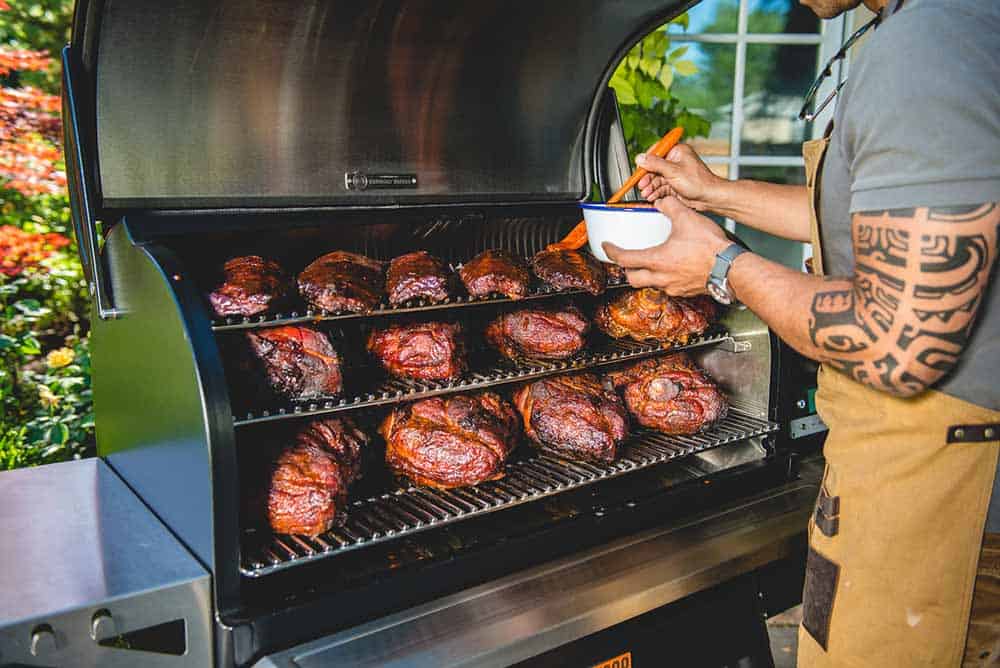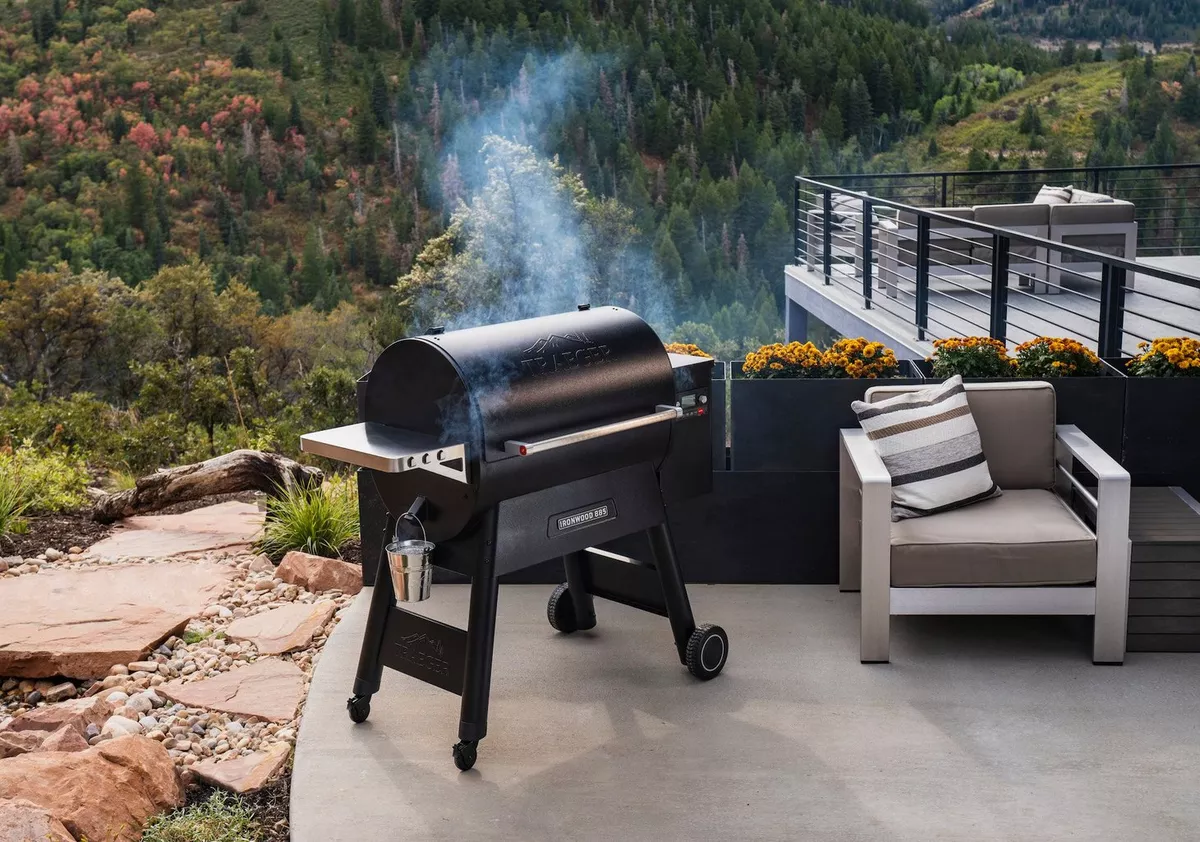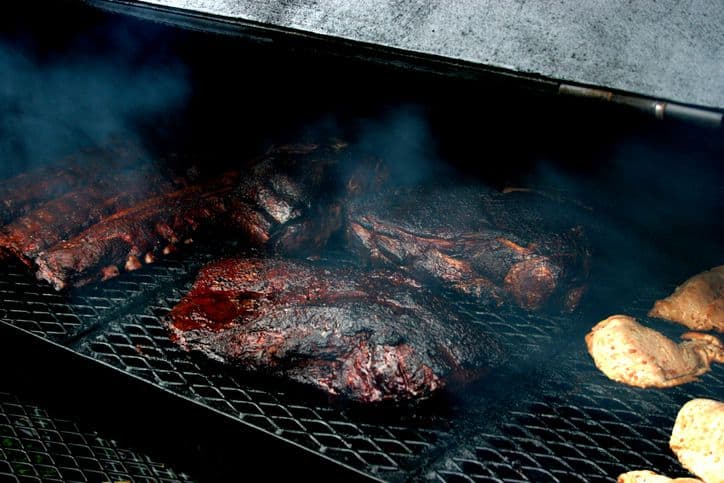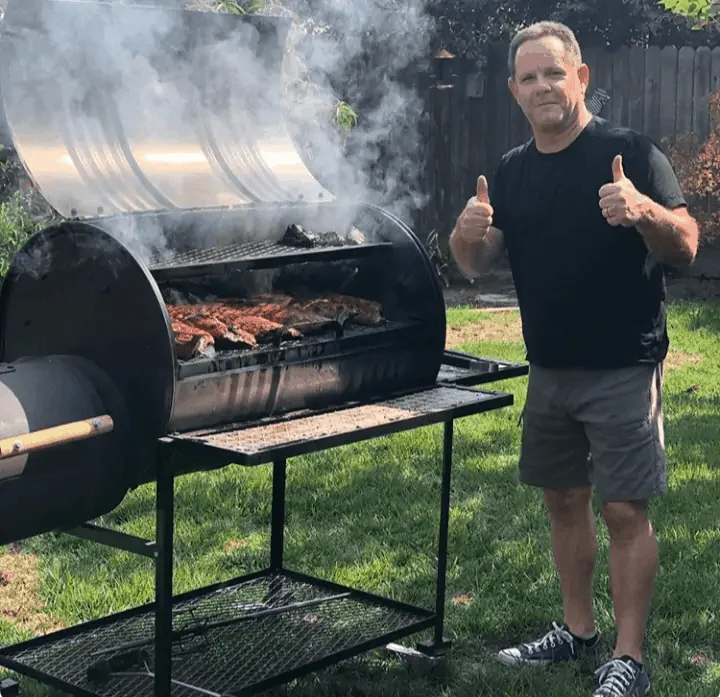Smoking has been a popular cooking technique for centuries, and it continues to be a beloved method of preparing meat today. There’s something magical about the combination of smoky flavors and tender, juicy meat that keeps people coming back for more. If you’re new to smoking, you may be wondering how to get started and what equipment you need. That’s where a smoker grill comes in.
A smoker grill is an essential tool for anyone who wants to try their hand at smoking meat. It provides the perfect environment for slow-cooking your favorite cuts of meat while infusing them with delicious smoky flavors. In this blog post, I will provide a beginner’s guide to using a smoker grill, covering everything from choosing the right equipment to troubleshooting common issues.
Key Takeaways
- Smoking is a slow-cooking method that infuses meat with flavor and tenderness.
- Choosing the right smoker grill depends on your budget, cooking needs, and personal preferences.
- Preparing your meat with brines, rubs, and marinades can enhance its flavor and texture.
- Lighting your smoker and controlling temperature are crucial steps to achieving a successful smoke.
- Monitoring your meat with a thermometer and timing your smoke are key to serving perfectly cooked and juicy meat.
Introduction to Smoking: Understanding the Basics
Before we dive into the world of smoker grills, let’s take a moment to understand what smoking is all about. Smoking is a cooking technique that involves exposing food (in this case, meat) to smoke from burning wood or charcoal over an extended period of time. This slow-cooking process not only imparts incredible flavor but also helps tenderize tough cuts of meat.
The history of smoking dates back thousands of years when our ancestors discovered that exposing food to smoke helped preserve it for longer periods. Over time, different methods and techniques were developed, giving rise to various types of smoking such as hot smoking and cold smoking.
Hot smoking involves cooking food at temperatures between 225°F (107°C) and 250°F (121°C), while cold smoking is done at much lower temperatures below 100°F (38°C). Each method has its own unique benefits and uses depending on the desired outcome.
Choosing the Right Smoker Grill: Factors to Consider
Now that we have an understanding of what smoking entails let’s move on to choosing the right smoker grill for your needs. There are several factors to consider when making this decision, including the type of smoker grill, size and capacity, budget, and desired features.
There are three main types of smoker grills: electric, charcoal, and gas. Electric smokers are convenient and easy to use but may lack the authentic smoky flavor that comes from burning wood or charcoal. Charcoal smokers provide a more traditional smoking experience but require more attention and maintenance. Gas smokers offer convenience and control but may not deliver the same depth of flavor as their charcoal counterparts.
When it comes to size and capacity, consider how much meat you plan on smoking at once. Smoker grills come in various sizes ranging from small portable models to large commercial-grade units. It’s important to choose a size that suits your needs without being too overwhelming or restrictive.
Budget is another crucial factor to consider when purchasing a smoker grill. Prices can vary significantly depending on the type of smoker grill and its features. Set a realistic budget for yourself before starting your search so you can narrow down your options accordingly.
Lastly, think about the features you want in a smoker grill. Temperature control is essential for maintaining consistent heat levels throughout the smoking process. Look for models with built-in thermometers or digital temperature controls for ease of use. Other features like multiple racks for different cuts of meat or easy access doors for adding wood chips can also enhance your smoking experience.
Preparing Your Meat: Tips for Brining, Rubbing, and Marinating
| Method | Description | Benefits |
|---|---|---|
| Brining | Soaking meat in a saltwater solution | Moisture retention, flavor enhancement |
| Rubbing | Coating meat with a dry spice mixture | Flavor enhancement, crust formation |
| Marinating | Soaking meat in an acidic liquid with herbs and spices | Flavor enhancement, tenderization |
Before you start smoking your meat, it’s important to prepare it properly to maximize flavor and tenderness. There are several methods you can use such as brining, rubbing with spices or herbs, or marinating in flavorful liquids.
Brining involves soaking meat in a saltwater solution before cooking it. This helps tenderize tough cuts while infusing them with moisture and flavor from the brine solution itself.
Rubbing is another popular method where you coat the meat with a mixture of spices, herbs, and other seasonings. This creates a flavorful crust on the outside of the meat while allowing it to absorb the flavors as it cooks.
Marinating involves soaking meat in a liquid mixture that typically includes acidic ingredients like vinegar or citrus juice along with herbs, spices, and other flavorings. This method not only adds flavor but also helps tenderize the meat.
When preparing your meat, be sure to choose ingredients and flavors that complement each other. Experiment with different combinations to find your favorite flavor profiles. Don’t be afraid to get creative and try new things – that’s part of the fun of smoking!
Lighting Your Smoker: Different Methods and Techniques
Now that you have your smoker grill set up and your meat prepared, it’s time to light up! There are several methods you can use to ignite your smoker grill, each with its own advantages.
One popular method is using an electric starter or heating element specifically designed for smoker grills. These devices provide a convenient way to generate heat without relying on open flames or charcoal briquettes.
Another common method is using a chimney starter filled with charcoal briquettes or lump charcoal. Simply place crumpled newspaper in the bottom compartment of the chimney starter and fill the top compartment with charcoal. Light the newspaper from below, and within minutes, you’ll have hot coals ready for smoking.
Regardless of which lighting method you choose, always prioritize safety first. Follow manufacturer instructions carefully when using any ignition device or lighting technique. Keep flammable materials away from open flames or hot surfaces at all times.
Controlling Temperature: Maintaining Consistent Heat Levels
Maintaining consistent heat levels throughout the smoking process is crucial for achieving perfectly smoked meats every time. There are several methods you can use to control temperature in your smoker grill.
Most smoker grills come equipped with dampers or vents that allow you to adjust the airflow. Opening the dampers or vents increases oxygen flow, raising the temperature, while closing them restricts airflow, lowering the temperature.
Another technique is using a water pan or drip pan filled with water or other liquids. This helps regulate temperature by absorbing and releasing heat as needed. The evaporating liquid also adds moisture to the smoking environment, preventing your meat from drying out.
Additionally, some smoker grills offer advanced features like digital temperature controls or automatic pellet feeders that maintain consistent heat levels for you. These features can be especially helpful for beginners who are still learning how to control temperature manually.
Experiment with different methods and techniques to find what works best for you and your smoker grill. Keep in mind that practice makes perfect when it comes to mastering temperature control in smoking.
Adding Smoke: Types of Wood Chips and Their Flavors
One of the most exciting aspects of smoking is choosing which wood chips to use for adding smoke flavor to your meat. Different types of wood chips impart distinct flavors that can enhance or complement various types of meat.
Hickory is a popular choice known for its strong smoky flavor that pairs well with beef, pork, and poultry. Mesquite offers a bold flavor profile often associated with Texas-style barbecue and works well with red meats like beef and lamb.
Fruitwoods like apple, cherry, and peach provide milder flavors that pair beautifully with poultry, pork, fish, and even vegetables. These woods add a touch of sweetness without overpowering delicate flavors.
Other options include oak (a versatile all-purpose wood), pecan (similar to hickory but milder), alder (ideal for fish), maple (mildly sweet), and many more depending on availability in your area.
When choosing wood chips for smoking meat, consider both the type of meat you’re cooking as well as personal preference regarding smoke intensity and flavor profiles. Don’t be afraid to mix different wood chips to create unique flavor combinations.
Smoking Techniques: Cold Smoking vs. Hot Smoking
Now that we’ve covered the basics of smoking, let’s explore two popular smoking techniques: cold smoking and hot smoking. Each technique has its own unique characteristics and uses, so it’s important to understand when and how to use them.
Cold smoking is done at temperatures below 100°F (38°C) and is primarily used for adding smoke flavor without cooking the meat. This technique is often employed for items like cheese, bacon, or salmon where a delicate smoky flavor is desired without altering the texture or doneness of the food.
Hot smoking, on the other hand, involves cooking meat at temperatures between 225°F (107°C) and 250°F (121°C). This method not only infuses meat with smoky flavors but also cooks it to a safe internal temperature while tenderizing tough cuts.
When deciding which technique to use, consider your desired outcome as well as food safety guidelines. Cold smoking requires additional precautions due to lower temperatures that may promote bacterial growth if not properly managed. Always follow recommended guidelines for safe cold-smoking practices.
Monitoring Your Meat: Using a Meat Thermometer and Other Tools
Monitoring your meat during the smoking process is essential for achieving perfectly cooked results every time. There are several tools you can use to ensure your meat reaches its ideal internal temperature without overcooking or undercooking.
A meat thermometer is an indispensable tool that allows you to accurately measure the internal temperature of your meat. Insert the probe into the thickest part of the meat away from bones or fat deposits for an accurate reading.
Another useful tool is a probe thermometer with multiple probes that allow you to monitor different cuts of meat simultaneously. This can be especially helpful when cooking large quantities or different types of meats at once.
In addition to thermometers, consider using other tools like heat-resistant gloves for handling hot meat, long-handled tongs for flipping or moving meat, and basting brushes for applying glazes or sauces during the smoking process.
Remember to clean and sanitize your tools after each use to prevent cross-contamination and ensure food safety. Proper maintenance of your tools will prolong their lifespan and keep them in optimal working condition.
Timing Your Smoke: Estimating Cooking Times and Resting Periods
Timing is everything when it comes to smoking meat. Estimating cooking times accurately ensures that your meat is cooked to perfection without being undercooked or overcooked.
While there are general guidelines for cooking times based on the type of meat, weight, and desired doneness, it’s important to remember that these are just estimates. Factors like ambient temperature, wind conditions, smoker grill performance, and even personal preference can affect actual cooking times.
To estimate cooking times more accurately, use a combination of internal temperature readings from a meat thermometer along with visual cues like color or texture changes in the meat. This will help you gauge when your meat is nearing its ideal doneness level.
Once your smoked meats reach their desired internal temperature, it’s crucial to allow them to rest before slicing or serving. Resting allows the juices within the meat to redistribute evenly throughout resulting in juicier and more flavorful final results.
As a general rule of thumb, let smaller cuts rest for at least 5-10 minutes while larger cuts may require 15-30 minutes or longer depending on size. Tenting loosely with foil during resting helps retain heat while preventing excessive moisture loss.
Serving Your Smoked Meat: Tips for Presentation and Pairing with Sides
Presentation plays an important role when serving smoked meats as it enhances both visual appeal and anticipation among diners. Here are some tips for presenting your smoked meats in an appealing way:
1) Slice against the grain: When slicing larger cuts like brisket or pork shoulder, be sure to cut against the grain. This helps ensure tenderness and makes for easier chewing.
2) Arrange slices neatly: Arrange your sliced meat on a platter or cutting board in an organized and visually pleasing manner. Consider layering different cuts or arranging them in a fan-like pattern for added visual interest.
3) Garnish with fresh herbs: Sprinkle some fresh herbs like parsley, cilantro, or chives over your smoked meats to add a pop of color and freshness.
4) Serve with homemade sauces: Offer a variety of homemade barbecue sauces, glazes, or dips alongside your smoked meats. These can complement the flavors of the meat while allowing guests to customize their experience.
When it comes to pairing sides with smoked meats, consider both flavor profiles and textures that will complement the smoky flavors. Classic choices include coleslaw, cornbread, baked beans, macaroni and cheese, potato salad, grilled vegetables, or even a simple green salad.
Experiment with different combinations to find what works best for you and your guests’ preferences. Don’t be afraid to get creative – there are no hard rules when it comes to pairing sides with smoked meats!
Troubleshooting Common Issues: How to Fix Dry, Tough, or Overcooked Meat
Even experienced smokers encounter issues from time to time that result in dryness, toughness or overcooking of their meat. Here are some common issues you may encounter when smoking meat along with tips on how to fix them:
1) Dryness: If your meat turns out dry after smoking it could be due to insufficient moisture during cooking. Try using water pans filled with liquid (such as apple juice or beer) inside your smoker grill next time as this will help keep the environment moist while adding flavor.
2) Toughness: Toughness can occur if you haven’t cooked tough cuts long enough at low temperatures needed for tenderizing collagen-rich connective tissues. Increase the cooking time and consider wrapping the meat in foil or butcher paper during the latter stages of cooking to help break down those tough fibers.
3) Overcooking: Overcooking can happen if you rely solely on estimated cooking times without monitoring internal temperatures. Invest in a reliable meat thermometer and use it to gauge doneness accurately. Remove your meat from the smoker grill once it reaches its ideal internal temperature, and allow it to rest before slicing.
Preventing these issues in the future involves practice, patience, and attention to detail. Keep a log of your smoking sessions noting cooking times, temperatures, wood chip flavors used, and any other relevant details that may help you troubleshoot or replicate successful results.
In conclusion, using a smoker grill is an exciting way to elevate your culinary skills and impress friends and family with delicious smoked meats. By understanding the basics of smoking, choosing the right equipment, preparing your meat properly, controlling temperature effectively, adding smoke flavor creatively, monitoring doneness accurately, presenting beautifully plated dishes with complementary sides – you’ll be well on your way to becoming a master smoker!
Remember that smoking is an art form that requires practice and experimentation. Don’t be discouraged if your first attempts aren’t perfect – learning from mistakes is part of the journey! With time and experience using a smoker grill will become second nature as you develop your own unique style.
So go ahead – fire up that smoker grill! Embrace this ancient technique with modern tools at hand as you embark on an adventure filled with smoky aromas and mouthwatering flavors. Whether you’re a seasoned pitmaster or a novice griller, the art of smoking meat is sure to captivate your senses and elevate your culinary skills. As the wood chips smolder and the meat slowly cooks, you’ll witness the magic of low and slow cooking, as flavors meld together and tenderize the meat to perfection. From succulent ribs and juicy briskets to flavorful pulled pork and tender smoked chicken, the possibilities are endless. So gather your favorite cuts of meat, experiment with different rubs and marinades, and let the smoker grill transport you to a world of delectable smoky goodness. Get ready to impress your friends and family with your newfound expertise in the ancient art of smoking.
FAQs
What is a smoker grill?
A smoker grill is a cooking device that combines the functions of a smoker and a grill. It is designed to cook food slowly over low heat, infusing it with smoky flavor.
What are the different types of smoker grills?
There are several types of smoker grills, including charcoal, gas, electric, and pellet smokers. Each type has its own advantages and disadvantages, and the choice depends on personal preference and cooking needs.
How does a smoker grill work?
A smoker grill works by heating wood chips or pellets to produce smoke, which is then used to cook the food. The food is placed on a rack or in a chamber, and the smoke circulates around it, infusing it with flavor and cooking it slowly over low heat.
What are the benefits of using a smoker grill?
Using a smoker grill allows you to cook food slowly and infuse it with smoky flavor, resulting in tender, juicy, and flavorful meat. It also allows you to experiment with different types of wood chips and seasonings to create unique and delicious dishes.
What are some tips for using a smoker grill?
Some tips for using a smoker grill include choosing the right type of smoker for your needs, preheating the smoker before adding the food, using a meat thermometer to ensure proper cooking temperature, and experimenting with different types of wood chips and seasonings to create unique flavors.
What are some common mistakes to avoid when using a smoker grill?
Some common mistakes to avoid when using a smoker grill include using too much wood or charcoal, not preheating the smoker, opening the smoker too often, and not using a meat thermometer to ensure proper cooking temperature.
Originally posted 2024-01-23 03:57:57.




